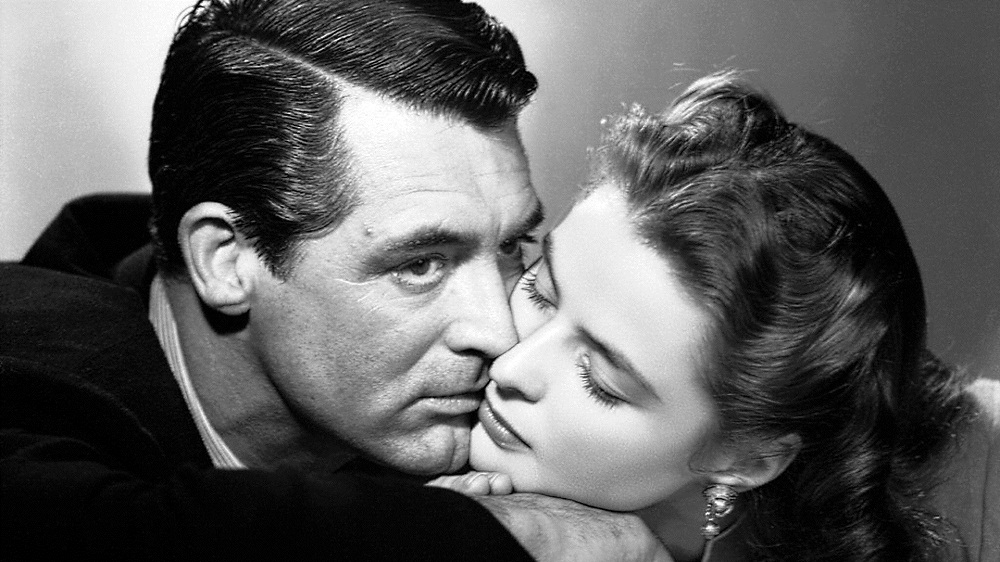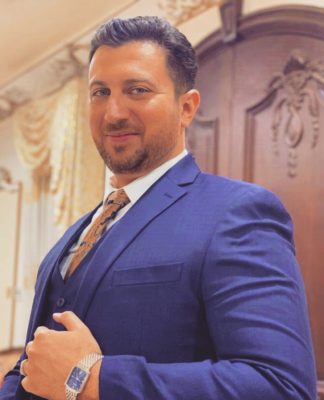Notorious (1946)
A woman is asked to spy on a group of Nazi friends in South America. How far will she have to go to ingratiate herself with them?
Director: Alfred Hitchcock
Writer: Ben Hecht
Stars: Cary Grant, Ingrid Bergman, Claude Rains
Ingrid Bergman Biography:
Date of Birth: 29 August 1915, Stockholm, Sweden
Date of Death: 29 August 1982, Chelsea, London, England, UK (lymphoma complications following a breast cancer operation)
Height: 5′ 9″ (1.75 m)
Ingrid Bergman was one of the greatest actresses from Hollywood’s lamented Golden Era. Her natural and unpretentious beauty and her immense acting talent made her one of the most celebrated figures in the history of American cinema. Bergman is also one of the most Oscar-awarded actresses, second only to Katharine Hepburn.
Ingrid Bergman was born in Stockholm, Sweden, on August 29, 1915, to a German mother, Frieda Henrietta (Adler), and a Swedish father, Justus Samuel Bergman, an artist and photographer. Her mother died when she was only two and her father died when she was 12. She went to live with an elderly uncle.
The woman who would be one of the top stars in Hollywood in the 1940s had decided to become an actress after finishing her formal schooling. She had had a taste of acting at age 17 when she played an uncredited role of a girl standing in line in the Swedish film Landskamp (1932) in 1932 – not much of a beginning for a girl who would be known as “Sweden’s illustrious gift to Hollywood.” Her parents died when she was just a girl and the uncle she lived with didn’t want to stand in the way of Ingrid’s dream. The next year she enrolled in the Swedish Royal Theatre but decided that stage acting was not for her. It would be three more years before she would have another chance at a film. When she did, it was more than just a bit part. The film in question was Munkbrogreven (1935), where she had a speaking part as Elsa Edlund. After several films that year that established her as a class actress, Ingrid appeared in Intermezzo (1936) as Anita Hoffman. Luckily for her, American producer David O. Selznick saw it and sent a representative from Selznick International Pictures to gain rights to the story and have Ingrid signed to a contract. Once signed, she came to California and starred in United Artists’ 1939 remake of her 1936 film, Intermezzo: A Love Story (1939), reprising her original role. The film was a hit and so was Ingrid. Her beauty was unlike anything the movie industry had seen before and her acting was superb. Hollywood was about to find out that they had the most versatile actress the industry had ever seen. Here was a woman who truly cared about the craft she represented. The public fell in love with her. Ingrid was under contract to go back to Sweden to film Only One Night (1939) in 1939 and Juninatten (1940) in 1940. Back in the US she appeared in three films, all well-received. She made only one film in 1942, but it was the classic Casablanca (1942) opposite the great Humphrey Bogart.
Ingrid was choosing her roles well. In 1943 she was nominated for an Academy Award for her role in For Whom the Bell Tolls (1943), the only film she made that year. The critics and public didn’t forget her when she made Gaslight (1944) the following year–her role of Paula Alquist got her the Oscar for Best Actress. In 1945 Ingrid played in Spellbound (1945), Saratoga Trunk (1945) and The Bells of St. Mary’s (1945), for which she received her third Oscar nomination for her role of Sister Benedict. She made no films in 1947, but bounced back with a fourth nomination for Joan of Arc (1948). In 1949 she went to Italy to film Stromboli (1950), directed by Roberto Rossellini. She fell in love with him and left her husband, Dr. Peter Lindstrom, and daughter, Pia Lindström. America’s “moral guardians” in the press and the pulpits were outraged. She was pregnant and decided to remain in Italy, where her son was born. In 1952 Ingrid had twins, Isotta and Isabella Rossellini, who became an outstanding actress in her own right, as did Pia. Ingrid continued to make films in Italy and finally returned to Hollywood in 1956 in the title role in Anastasia (1956), which was filmed in England. For this she won her second Academy Award. She had scarcely missed a beat. Ingrid continued to bounce between Europe and the US making movies, and fine ones at that. A film with Ingrid Bergman was sure to be a quality production. In her final big-screen performance in 1978’s Autumn Sonata (1978) she had her final Academy Award nomination. Though she didn’t win, many felt it was the most sterling performance of her career. Ingrid retired, but not before she gave an outstanding performance in the mini-series A Woman Called Golda (1982), a film about Israeli prime minister Golda Meir. For this she won an Emmy Award as Best Actress, but, unfortunately, she didn’t live to see the fruits of her labor. Ingrid died from cancer on August 29, 1982, her 67th birthday, in London, England.
Cary Grant Biography:
Date of Birth: 18 January 1904, Horfield, Bristol, England, UK
Date of Death: 29 November 1986, Davenport, Iowa, USA (cerebral hemorrhage)
Birth Name: Archibald Alexander Leach
Height: 6′ 1½” (1.87 m)
Once told by an interviewer, “Everybody would like to be Cary Grant”, Grant is said to have replied, “So would I.”
Cary Grant was born Archibald Alexander Leach in Horfield, Bristol, England, to Elsie Maria (Kingdon) and Elias James Leach, who worked in a factory. His early years in Bristol would have been an ordinary lower-middle-class childhood, except for one extraordinary event. At age nine, he came home from school one day and was told his mother had gone off to a seaside resort. The real truth, however, was that she had been placed in a mental institution, where she would remain for years, and he was never told about it (he wouldn’t see his mother again until he was in his late 20s). He left school at fourteen, lying about his age and forging his father’s signature on a letter to join Bob Pender’s troupe of knockabout comedians.
He learned pantomime as well as acrobatics as he toured with the Pender troupe in the English provinces, picked up a Cockney accent in the music halls in London, and then in July 1920, was one of the eight Pender boys selected to go to the US. Their show on Broadway, “Good Times,” ran for 456 performances, giving Grant time to acclimatize. He would stay in America. Mae West wanted Grant for She Done Him Wrong (1933) because she saw his combination of virility, sexuality and the aura and bearing of a gentleman. Grant was young enough to begin the new career of fatherhood when he stopped making movies at age 62. One biographer said Grant was alienated by the new realism in the film industry.
In the 1950s and early 1960s, he had invented a man-of-the-world persona and a style–“high comedy with polished words.” In To Catch a Thief (1955), he and Grace Kelly were allowed to improvise some of the dialogue. They knew what the director, Alfred Hitchcock, wanted to do with a scene, they rehearsed it, put in some clever double entendres that got past the censors, and then the scene was filmed. His biggest box-office success was another Hitchcock 1950s film, North by Northwest (1959) made with Eva Marie Saint since Kelly was by that time Princess of Monaco.
Source: IMDB






























